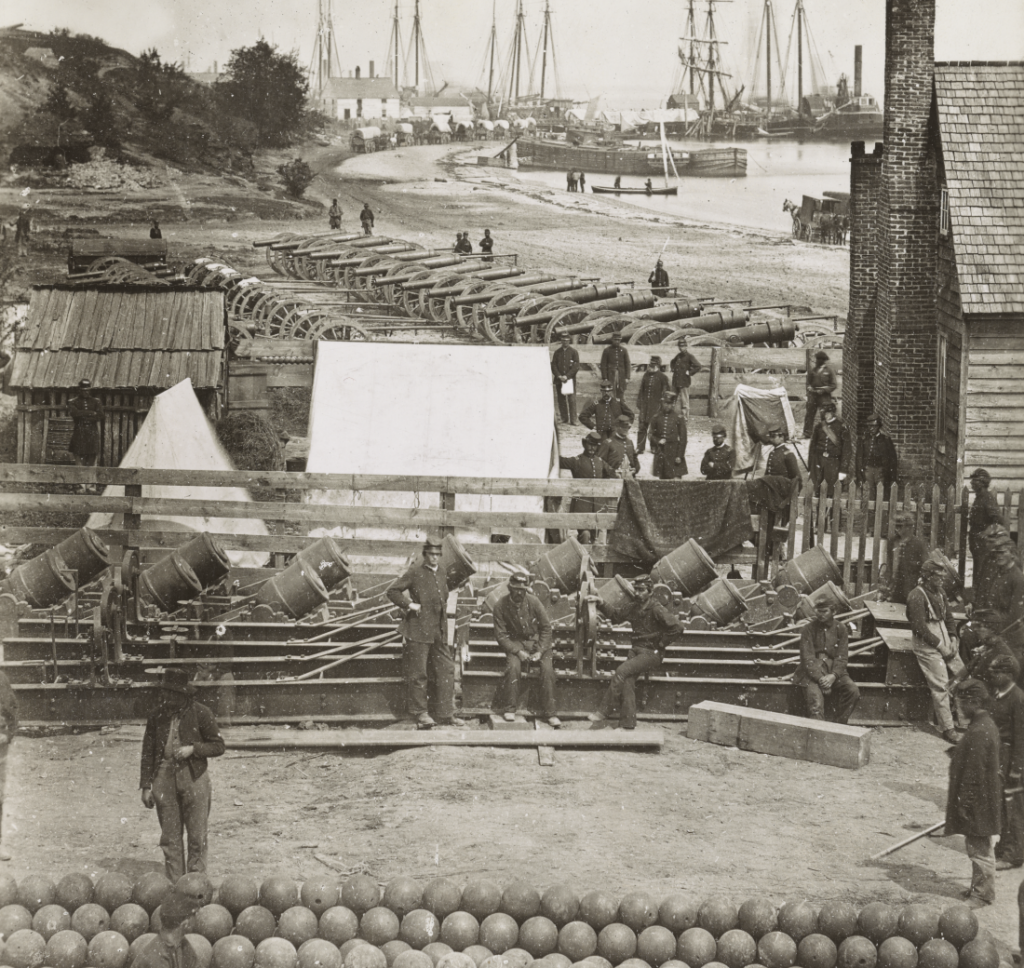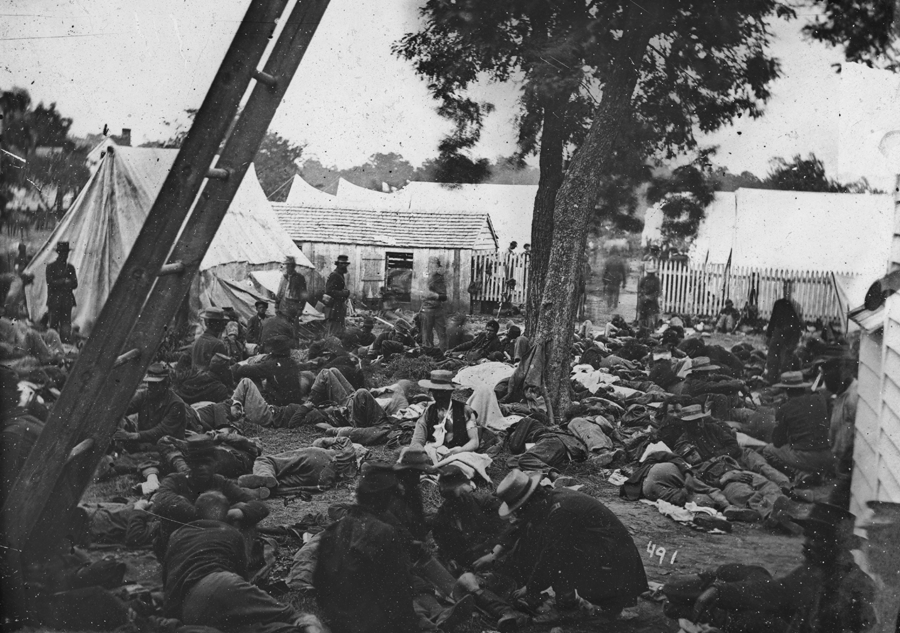Civil War photographers risked their own lives to document the horrors of war
By Sarah Smith
The American Civil War is considered the birth of photojournalism. The graphic images that showed the aftermath shocked audiences worldwide and de-romanticized war. The Battle of Gettysburg in 1863 was one of the war’s bloodiest battles.
Although there were many Civil War photographers, some of the most prolific—including Mathew Brady, William Tipton, and Timothy H. O’Sullivan—are to thank for helping to preserve the battle’s legacy, making sure Americans never forgot the steep cost of war.


Mathew Brady
Mathew Brady is perhaps the best known of the Civil War photographers. Little is known about Brady’s life before the war. He was born in the early 1820s to Irish immigrant parents in Warren County, New York. Brady came to New York City at 16; he worked as a clerk and made jewelry cases while at the same time learning how the daguerreotype worked. In 1844, he opened his own studio on Broadway and, 14 years later, opened an art gallery in Washington, D.C. Brady believed it was his mission to preserve history’s “faces.”
Despite financial and personal risks, Brady gathered photographers to document the Civil War. His studio employed photographers including Alexander Gardner, James F. Gibson, and Timothy H. O’Sullivan. In 1862, America was shocked when Brady displayed Antietam battlefield images taken by Alexander Gardner and James Gibson
in his New York studio taken only a month after the battle ended.
Brady faced massive debt from personally financing his Civil War photography until the Library of Congress bought his entire collection of negatives for $25,000 in 1875. Full appreciation of his work did not occur until years later. “No one will ever know what I went through to secure those negatives,” Brady said.
William Tipton
William Tipton, born in 1850 in Gettysburg, began his career by apprenticing with Tyson Brothers photography in town. During the Battle of the Gettysburg, the Tyson brothers left, and Tipton helped Mathew Brady photograph the aftermath.
Tipton is best known for his images of the Gettysburg battlefields, but he also took images of Antietam, Harpers Ferry, and other battlefields.
Tipton was active in local politics and served as a state legislator from 1897 to 1898. He was also a businessman and opened the Tipton Park amusement park in Devil’s Den in 1894. The park’s opening was ill-received, and the U.S. War Department bought the park in 1901. Tipton died in 1929 and is buried in Gettysburg’s Evergreen Cemetery.
Alexander Gardner
Alexander Gardner was born in 1821, in Paisley, Scotland. In 1850, he and his brother James moved to Iowa. In need of money, Alexander Gardner returned to Scotland, and during this time, visited the Great Exhibition of 1851 in London. Here, he was exposed to Mathew Brady’s photography and began tinkering with the art himself.
Gardner returned to America in 1856 and was soon employed by Brady. He started as a photographer, but due to his failing eyesight, Brady gave Gardner responsibility for his entire gallery in 1858.
At the beginning of the Civil War, Gardner became a highly desired portrait photographer. However, Brady soon tasked Gardner and others to travel the Civil War battlefields and photograph events. In November 1861, Gen. George McClellan made Gardner an honorary captain. This position allowed Gardner to capture images of Antietam, making him Brady’s first photographer to capture dead bodies on the battlefield.
Gardner is known for capturing the last known portrait of President Abraham Lincoln. He also photographed the Lincoln conspirators and their execution. After the Civil War ended, Gardner ran a gallery in Washington, D.C. He then abandoned photography to run an insurance company in Washington, D.C. from 1871 until his death in 1882. Gardner said his work was designed to “speak for itself.”

James F. Gibson
Very little is known about James F. Gibson’s life before and after the war. Gibson was born around 1828 in Scotland. At some point, he immigrated to America, where he was employed by Mathew Brady’s studio.
Gibson is perhaps best known for his work on the Peninsula Campaign and the Seven Days Battles. The campaign is also considered the true start of Civil War photojournalism.
George Barnard, who was Gibson’s assistant, helped Gibson capture more than 100 photographs between April and June 1862. Many of Gibson’s images were of the siege of Yorktown, possibly including soldier portraits. Gibson followed Union Gen. George McClellan, capturing images of Cumberland and White House Landing, Fair Oaks, and around the Chickahominy River.
Gibson’s best-known photograph is of the wounded soldiers in Savage Station, Virginia, after the battle that took place there on June 27, 1862; the photograph is controversial because of its graphic nature.
Timothy H. O’Sullivan
Timothy H. O’Sullivan was born in Ireland in 1840 and it’s unclear when he came to the United States. In 1861, O’Sullivan was employed by Mathew Brady’s studio to photograph the war; he’d previously been Brady’s apprentice. O’Sullivan worked closely with Alexander Gardner until the war ended.
O’Sullivan’s work focused on the destruction war caused. One of his images, “Incidents of the War: Interior of Breastworks on Round Top, Gettysburg,” featured still-smoking ruins.
After the war, O’Sullivan moved to landscape work. He worked on both Clarence King’s survey of the 40th parallel, exploring the Rocky and Sierra Nevada mountains, and George M. Wheeler’s surveys west of the 100th meridian. In 1873, he went southwest and photographed the Apache, as well as Zuni and Magia pueblos. O’Sullivan died in New York City in 1882.
Photojournalism would not exist in its capacity today without the graphic images of the Civil War battlefields and the contributions of the photographers who risked their personal safety to show Americans what they couldn’t see for themselves. Because of their images, today we have a greater understanding of this war that divided our country.




